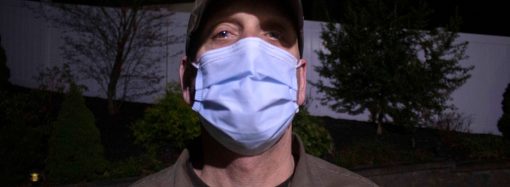By Nirvani Williams
After taking JRN 393, the School of Journalism’s audio journalism course, I was excited that I understood the writing and editing process that could be translated to NPR-affiliate stations as well as to NPR itself. I’m a long-time NPR listener: My uncle would drive me to my high school in Manhattan from my home in Queens, and we would listen to NPR’s “Morning Edition” on the commute. I loved hearing the news in such a captivating and compelling way. I never ruled out the possibility of delving into a career in radio, and I started listening to other shows such as
All Things Considered,” “This American Life” and “NPR News Now.”
At WSHU’s Long Island bureau, adjacent to the Stony Brook campus, I got hands-on experience in writing copy tailored specifically to radio and in recording many types of audio files to air. At the beginning, I was more concerned with writing for radio than about how my voice would sound on air, but it turned out that reading aloud was harder for me than writing. After working with Jay Shah, the station’s Long Island bureau chief, and J.D. Allen, a WSHU news editor, my scripts were succinct, simple and clear, but my voice sounded a bit unnatural. I was trying to sound professional, but in doing so, I distorted the authenticity of my voice. Weirdly enough, I also failed to take the necessary pauses between sentences. Learning how to pause in the proper places is imperative in curating appropriate sound bites to air.
I had never thought much about intentionally breathing between thoughts and sentences, but J.D. and Terry Sheridan, WSHU’s news director, stressed the importance of sounding natural. I specifically remember J.D. saying, “The audience has to hear you breathe.” I felt so self-conscious about my voice for the first few weeks at the bureau. Terry had me write readers (scripts of a story without a recorded voice track) and practice them before I could move onto voicers (scripts with a voice track), wraps (scripts with a reporter track and a source track) and superspots, which are scripts with a reporter track followed by multiple source tracks.
Eventually, J.D. started assigning me wraps, which I thoroughly enjoyed. I loved the challenge of quickly receiving an assignment and cultivating enough research on the topic in very little time before interviewing source. Successfully doing this gives you a head rush as a journalist. You have to be able to adapt to a variety of situations, and WSHU gave me the confidence to ask the right questions that generated worthwhile quotes for my stories. I felt like I was growing in my reporting, interviewing and writing skills with every assignment.
Jay, J.D., and Terry were incredible editors. They always gave my scripts constructive criticism. They pushed me to break down complex ideas and write them in simple ways, building on skills I’d previously learned in my broadcast classes.
The biggest piece of advice that I would give to anyone taking this internship is to take the critique that your editors give you to help craft your scripts. Sounding conversational about topics that you’re starting to research is a huge asset in broadcast journalism.
At the end of my internship, J.D. kindly asked me to discuss a story that I had pitched about the overpopulation of turkeys on Long Island in a short segment at the end of his show, “The Full Story,” on WSHU. I was honored to be on a live show with Ron Ropiak, a professional host, cultivating talking points about a fun topic that I had reported on throughout the semester. I was intimidated at first, but once I got in the sound booth and started conversing with Ron, everything felt natural. I couldn’t believe how comfortable I felt in that situation. This internship has prepared me for such an amazing opportunity. I highly recommend this internship to any journalism student.
